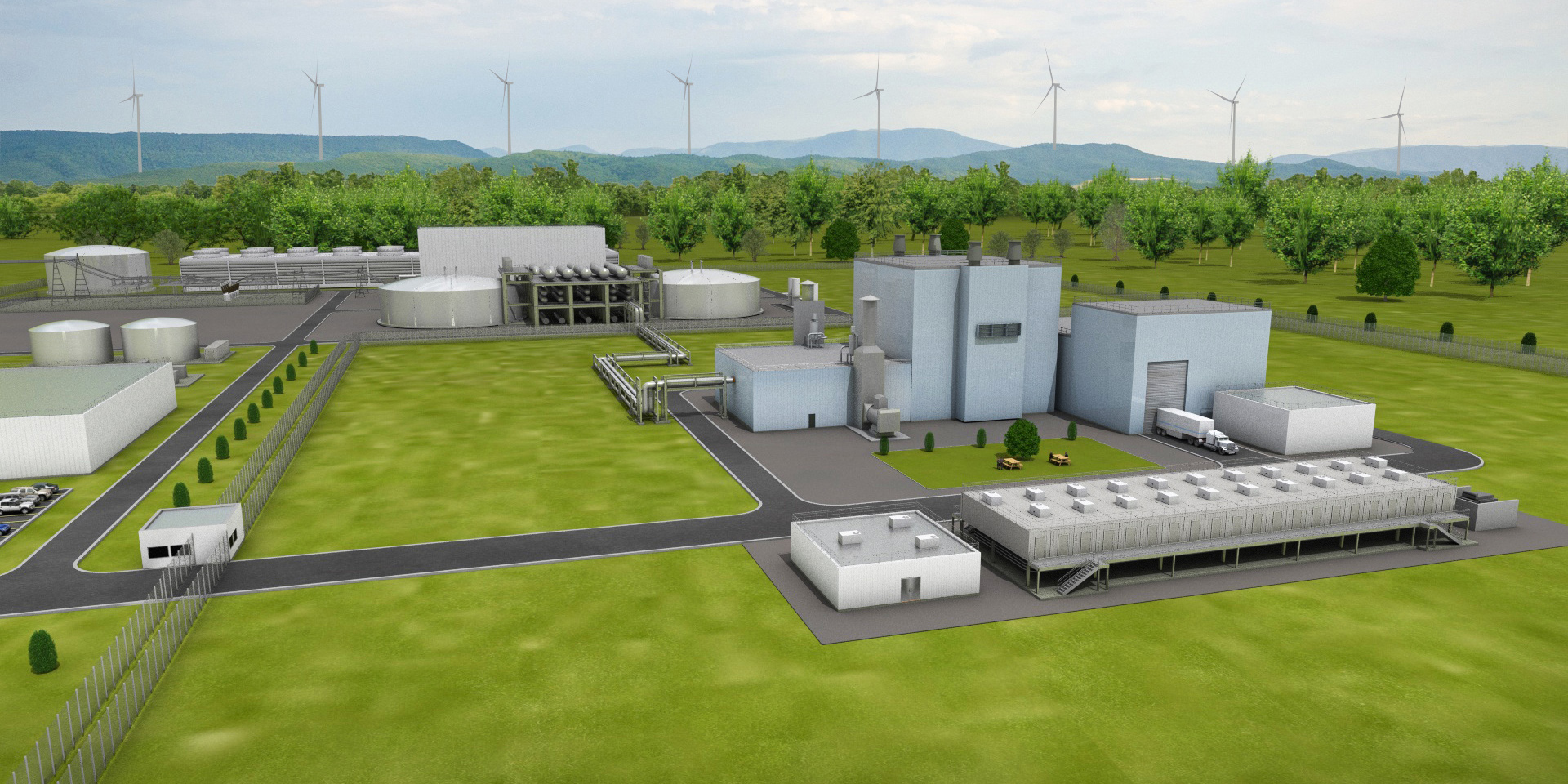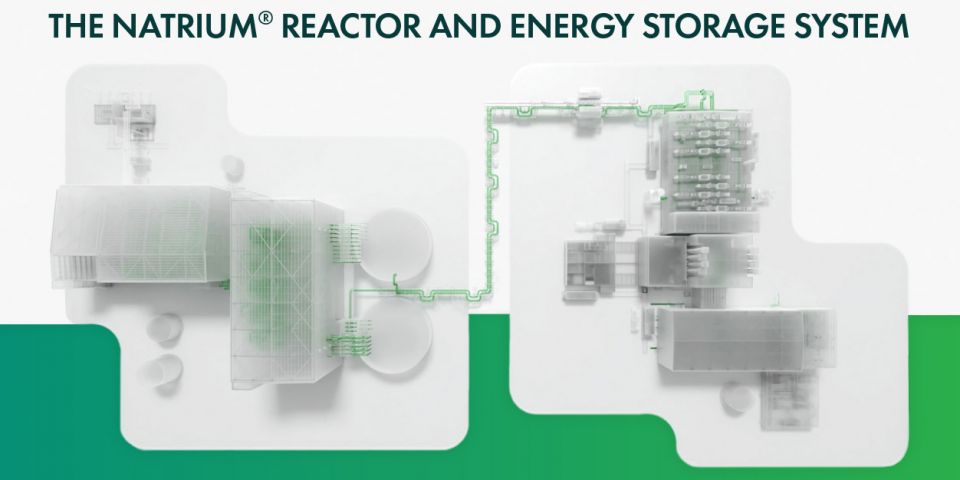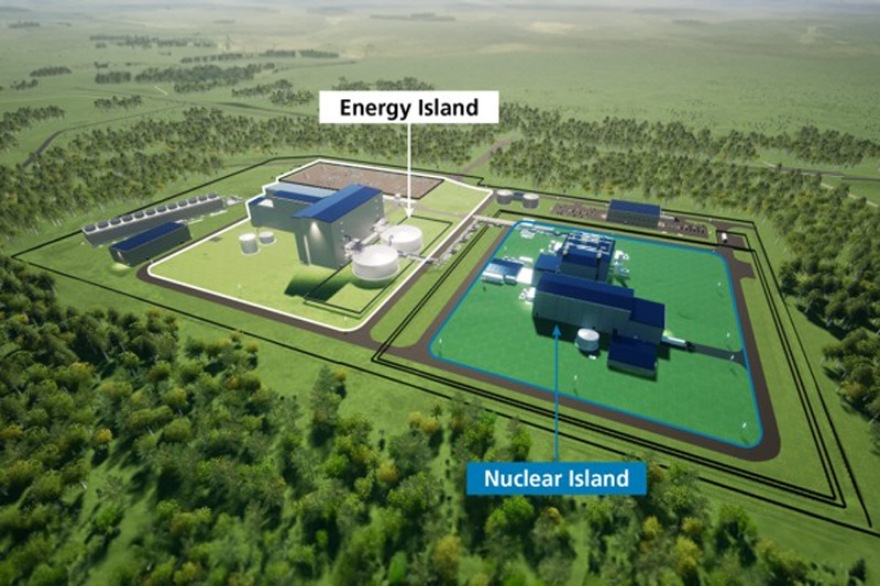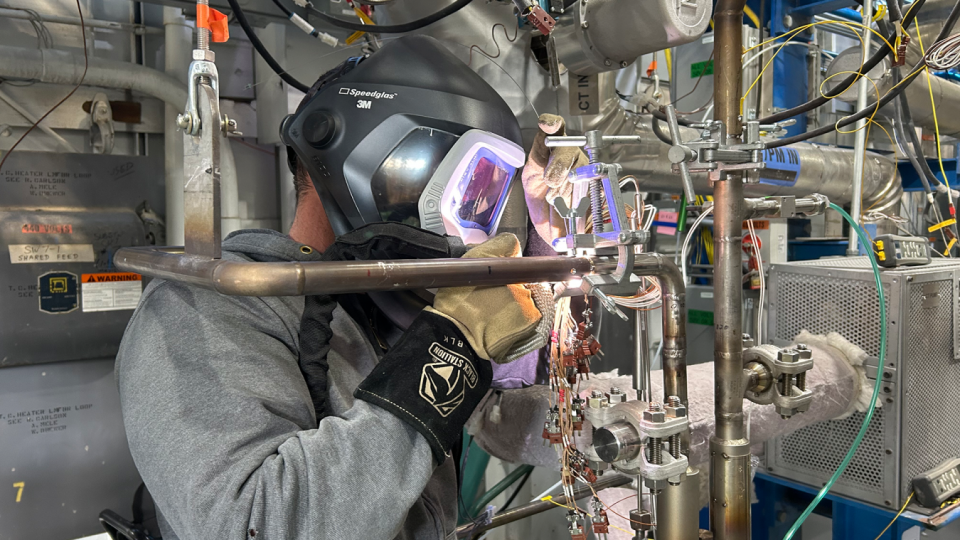The Natrium technology: Providing reliable, carbon-free energy to complement wind and solar

Around the world, national and local policymakers and business leaders are making bold and ambitious commitments to clean energy goals. In the United States, one in three Americans now lives in a city or state that has committed to or has achieved 100 percent clean electricity, according to the Luskin Center for Innovation at the University of California–Los Angeles.
Renewable energy sources such as wind and solar have an important role to play in helping communities and states achieve these goals. The Natrium reactor and integrated energy storage system is designed to pair with renewables to ensure reliability and a decarbonized energy grid.
An advanced reactor technology: TerraPower and GE Hitachi Nuclear Energy combined their decades of experience and expertise to develop the Natrium technology, which joins a sodium fast reactor with a gigawatt-hour–scale thermal energy storage system that can be optimized for specific markets.
As a sodium-based technology, the reactor offers natural, inherent safety characteristics and high efficiency and has significant, existing operational performance data. Compared to conventional nuclear technologies, the Natrium reactor will operate at higher temperatures and lower pressures. The high boiling point of sodium means that the reactor can operate at atmospheric pressure. This eliminates the associated large, pressure-retaining equipment and civil structures.
Sodium also offers exceptional heat transfer due to the coolant’s thermal conductivity, which is three times higher than stainless steel, the reactor structural material. This heat transfer results in high power density. When combined with the inertia of the sodium pool configuration, the high power density leads to a smaller heat supply and heat removal systems. The high heat transfer of the reactor coolant, even under natural circulation, enables direct heat removal from the surface of the vessel by air. This passive heat removal design allows for a major reduction in equipment and structures compared to previous nuclear technologies.
The high-temperature capability of the sodium also enables process heat applications that currently rely on fossil fuels—such as desalinating water, providing district heating, or producing hydrogen, petrochemicals, or steel—without generating carbon emissions.
Simplified architecture and construction: One of the true innovations in the Natrium technology is its novel approach to plant architecture and construction that decouples and simplifies major structures. For example, the energy island, which represents most of the plant, can be constructed and operated without the need for special nuclear requirements or nuclear regulatory approval. This separation also allows for the nuclear and nonnuclear portions of the plant to be built in parallel and results in lower capital costs and a reduced schedule compared to previous nuclear construction projects. The Natrium technology also features a compact atmospheric pool reactor system with passive vessel cooling. This system significantly reduces space and the amount of nuclear-grade concrete required. In fact, on a per megawatt-electric basis, a Natrium reactor uses 80 percent less nuclear-grade concrete compared to existing large reactors.
The separation of major structures and the unique approach to nuclear plant architecture and construction result in a design that is as simple as possible, helping to reduce complexity, cost, and construction time.
Thermal storage for flexible energy delivery: The combination of an integrated thermal energy storage system and a sodium fast reactor is a distinctive feature of the Natrium technology. Notably, a sodium fast reactor is an excellent temperature fit for the molten salt currently used at concentrated solar power plants.
The Natrium system uses a combination of sodium, molten salt, and water/steam to transfer and store heat and create electricity. The reactor core is cooled by liquid sodium circulating within the reactor vessel. The heat is removed from the reactor vessel through a heat exchanger, where the sodium transfers its heat to molten salt, which then carries it away to thermal storage and/or the steam generation system. The steam generation system then produces high-pressure, superheated steam for conversion to electrical power by the steam turbine generator.
The reactor will run at 100 percent power, 24 hours a day, seven days a week. When power demand is low, the heat the reactor produces will be stored in the molten salt storage tanks. When demand for power increases or wind and solar sources are unavailable, the turbine can utilize the stored heat and ramp up to produce approximately 150 percent of the nominal reactor power. For example, the thermal energy storage can boost the Natrium system’s output to 500 MWe for more than five and a half hours when needed.
The addition of energy storage allows the Natrium technology to overcome the load-following challenges that baseload reactor designs face in the 21st century. It also allows the reactor to operate at a high capacity factor while simultaneously supporting the increased use of wind and solar and helping utilities capture more daily electricity revenue.
Demonstration of a truly advanced nuclear technology: As part of its Advanced Reactor Demonstration Program, the Department of Energy selected TerraPower to demonstrate the Natrium reactor and integrated energy storage system with technology co-developer GE Hitachi and engineering and construction partner Bechtel. Numerous utilities, including Energy Northwest, Duke Energy, and PacifiCorp, a subsidiary of Berkshire Hathaway Energy, will also provide their expertise in the areas of licensing, operations, maintenance, siting, and grid needs.
The Natrium technology will be demonstrated at full commercial scale, avoiding the need to transition from a small-scale prototype to become commercially viable. At the end of the project, the demonstration will be a Nuclear Regulatory Commission–licensed, grid-scale reactor entering commercial service.
The Natrium technology will be available as early as the late 2020s, making it one of the first commercial advanced nuclear technologies. With its flexible energy delivery and ability to support the increasing use of wind and solar sources, the Natrium technology is well positioned to help communities across the United States and around the world meet their clean energy goals.







